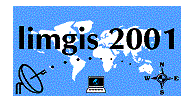 (GIS)
(GIS)

GEOGRAPHIC
Introduction
The
rapid development in computer and information technology has helped in the best
utilisation of remotely sensed data. Geographic information system has become a
necessary tool in analysing and utilising remotely sensed satellite data.
In
the strictest sense, a GIS is a computer system capable of assembling, storing,
manipulating, and displaying geographically referenced information, i.e. data
identified according to their locations. GIS
as a computer-based tool is used for mapping and analysing events that happen on
earth by integrating common database operations such as query and statistical
analysis with visualisation and geographic analysis of maps. In a simple
way GIS is a link between maps and databases.
GIS
is also referred as a "system of computer hardware, software, and
procedures designed to support the capture, management, manipulation, analysis,
modular and display of spatially referenced data for solving complex planning
and management problems" (Federal Interagency Co-ordinating committee -
FICCDC, 1998).
Mapmaking and geographic analysis are not new, but a GIS performs these tasks better and faster than the old manual methods. Siting of water harvesting structures, finding the best soil for growing paddy, or figuring out the best route for an emergency vehicle, or local problems, all with geographical components can be handled effectively using GIS.
GIS can create maps, integrate information, visualise scenarios, solve complicated problems, present powerful ideas, and develop effective solutions.